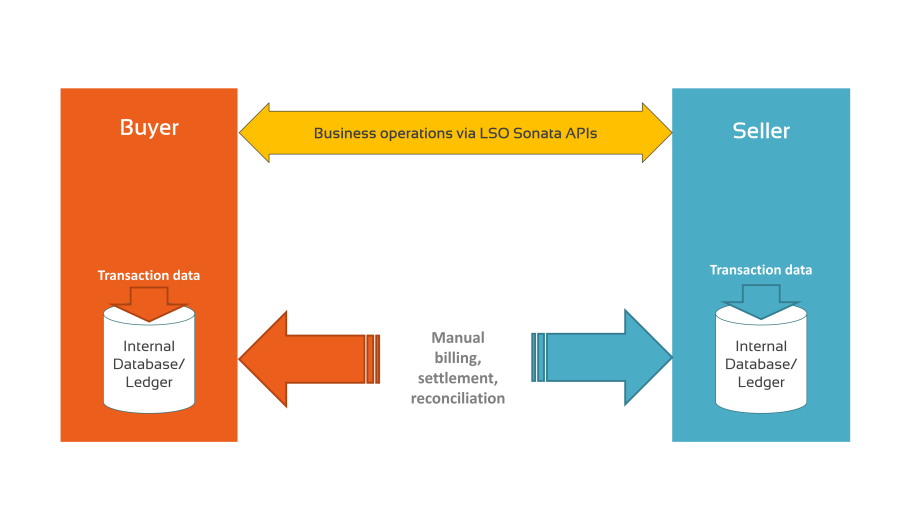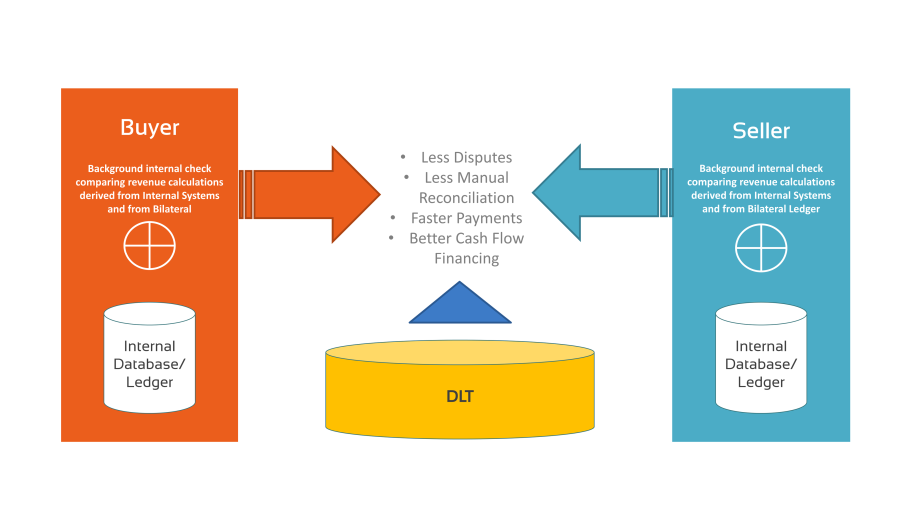
on Posted on Reading Time: 3 minutes
Every year, telecoms transact hundreds of billions of dollars worth of wholesale digital services, including voice. These transactions always involve ordering and billing. Streamlining those aspects of doing wholesale business would be hugely beneficial for telecoms—both in terms of operational savings, and enlarging the market for high-volume, short duration, wholesale digital services that are increasingly in demand.
Service providers spend untold millions of dollars on Enterprise Resource Planning (ERP) and other systems for external-facing commercial transactions with their telecom partners. Because these systems of record are not typically synchronized between telecoms, there are considerable inefficiencies, and thus increased costs, in commercial transactions: disputes, lost inventory, inflated capital costs, regulatory actions, etc.
This inefficiency can be mitigated by creating a common frame of reference for commercial transactions between two telecoms—for communications, a common language, and commercial state of documents.
Until now, a common communications frame of reference was achievable only by spending a lot of money on integrations—such as ERP-connected EDI systems—while each side still managed the state of a commercial relationship independently. It should be noted that such direct integrations between two transacting entities have not been practical for most telecoms due to high cost and long integration times.

However, recent major advances in cryptography, messaging, and Distributed Ledger Technology (DLT) make it possible to deliver secure and private synchronization of systems of record between telecoms that is cost-effective, dynamic, and automated. This synchronization is achieved by establishing a DLT-based shared ledger. We have coined the term for such bilateral agreements as ‘Smart Bilaterals.’
DLT has been on MEF’s radar for several years. Over the past 12 months, MEF members have conducted numerous discussions around this topic to enable globally federated value networks. As a result of these discussions, MEF members approved a project to develop a new MEF standard, DLT-based Commercial and Operational Services Framework—Billing (MEF W114), which defines the use of DLT and, in particular, Smart Bilaterals within bilateral commercial billing transactions, in full alignment with the existing MEF LSO architecture and MEF LSO Sonata standards.
Key benefits of Smart Bilaterals:
- Cost reductions through automation and synchronization, virtually eliminating costly billing errors and process cycle times.
- New revenue streams by cost-effectively supporting very high volumes of transactions for short-lived services, which are increasingly important in the era of Bandwidth on Demand, IoT, NFV/5G, Slicing, etc.

To prove that such benefits are real, and to inform the formulation of the standard based on real-life commercial experiences for Ordering-through-Billing completion using Smart Bilaterals, two MEF member service providers—HGC and DCconnect—are collaborating with QLC Chain and MEF, in MEF 3.0 PoC (130) to create the world’s first Smart Bilateral, based on a working draft of MEF W114.
The implementation of a new Smart Bilateral with two telecom wholesale partners into thisPoC is planned to be completed within just 7 weeks. The rapidity of the implementation is the result of the extensive preparation by QLC Chain and the infrastructure made available by MEF. Onboarding includes initiation, technical, and commercial setup, through to service operation, process implementation, and completion.
A telecom that wants to be onboarded into a new Smart Bilateral in the PoC will need the following stakeholders:
- Procurement
- Billing and Legal Subject Matter Expert (SMEs)
- System/Integration and Quality Assurance Engineers
- A project manager
- A business sponsor.
The expected weekly involvement from each of the participants is very moderate and ranges from one-to-ten hours a week.
As MEF 3.0 PoC (130) grows with additional MEF member service providers and the processes mature, it is expected that it will evolve into an ongoing ‘hotstage’ area for MEF member service providers to learn and test implementations of DLT in their ordering-and-billing interactions with partners.
We’ve also just published a white paper—Business Opportunities from Billing and Settlement of Digital Services using DLT—that explains Smart Bilaterals and their importance in streamlining billing and settlement between service providers buying from, and selling to, one another.
For more information, contact Daniel Bar-Lev (daniel@mef.net) or Dr. Andreas Freund (andreas.freund@qlink.mobi)

